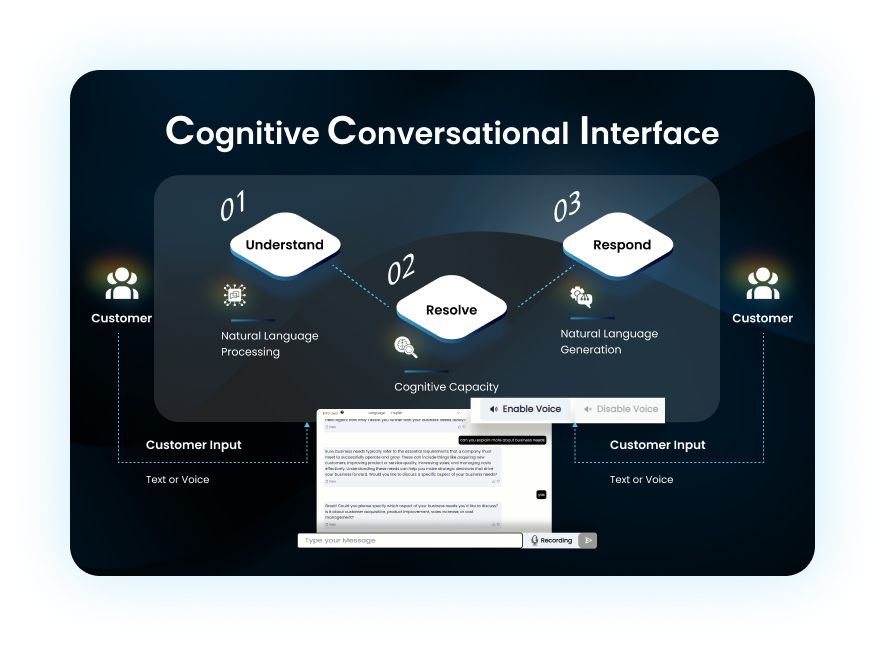Efficiency and productivity have therefore become buzzwords in the fast business world of today. Most companies are working on the best optimization of their operations and staying ahead of the competition. That is why they have started to turn to chatbots as this powerful tool for efficiency in streamlining workflows for the enhancement of customer experience.
Chatbots can handle routine inquiries, offer instant support, and enable self-service, freeing up employees to work on higher-value tasks—thereby driving growth within the business.
In this post, we shall provide you with examples of how chatbots can help you streamline your workflow using various instances of implementation success in other industries.
Managing Routine Questions and Support
One of the most important ways chatbots simplify workflows is by managing repetitive queries and support questions. In most organizations, a lot of time is spent by employees answering basic questions, providing information, and attempting to solve common problems. By taking on such routine assignments, chatbots not only lighten the load on support teams but also speed up service delivery.
For instance, a software firm, Autodesk, launched a chatbot to answer questions on software installation, licensing, and troubleshooting. In this way, the chatbot made it possible to provide around-the-clock, real-time customer service, saving oceans of support tickets and phone calls so the technical support team could focus on what needed their attention.
Enable Self-Service and Personalization
The other major chatbot benefit is the possibility of self-service and personalization. Customers are informed, and can transact, or manage their accounts through a conversational interface, and chatbots provide customers the possibility to do it themselves while being least influenced by it.
This is applicable in banking, and many banks have already adopted chatbots to assist customers in checking account balances, making funds transfers, and even loan and credit card applications. This way, chatbots will guarantee a frictionless and intuitive self-service experience without waiting, thus reducing waiting times, and increasing customer satisfaction while relieving bank employees in handling more complicated and revenue-generating activities.
Making Workflows and Processes Automatic
Additionally, they can help in optimizing the workflows of the organization through the automation of repetitive and time-consuming assignments. Integration with other systems and applications allows chatbots to take the needed actions, update records, make communication easy, and stimulate collaboration among teams and even between departments.
For example, in HR, chatbots are used for employee onboarding, benefits enrollment, and even performance management. By guiding an employee through any given process and giving real-time help and feedback, the chatbot will relieve the HR team of administrative load to ensure consistency and compliance across the organization.
Making Data Collection and Analysis Better
With chatbots, they are also able to gather and analyze very important data relating to customer preferences, behavior, and interactions. Chatbots, through harvesting and processing in volumes of natural language data, can expose rich insights into customer needs, pain points, and sentiment toward making more informed decisions and personalized experiences.
For instance, e-commerce leader Amazon uses chatbots for collecting feedback from customers, resolving complaints, and providing product recommendations based on customer needs. Information obtained from these interactions helps in identifying trends for product optimization and, more generally, in improving customer experience.
Best Practices on Chatbots Implementation
The benefits of chatbots may be clear, but their successful implementation requires careful planning, design, and execution. The best practices for implementing a chatbot that will be deployed properly are:
- Clearly define the goals and use cases for the chatbot
- Design of intuitive, natural, and human-centered conversational flows Integration of the chatbot with relevant systems and data sources
- Continuous monitoring and improvement of the performance of the chatbot based on user feedback and data inferences
These, coupled with following best practices in this area, would allow companies to gain full benefit from what chatbots offer in streamlining processes, improving customer experiences, and building a great and growing business.
Chatbots to Help You Get Started Today
We’re dedicated to helping businesses design, develop, and deploy intelligent chatbots that drive workflow automation, task automation, and the best customer experience. With all the pre-built templates, integrations, and scope for customizations available within our platform, a business at any level can find it easy and cost-effective to create and launch its own chatbots.
Be it answering repetitive queries, enabling self-service, automating your process, or getting insights about your customers, ExpertEase AI can help you with that. We have a team of well-experienced designers, developers, and strategists who are able to assure successful implementation at each step of the way.
Get your free account on ExpertEase AI today to help you be one step ahead with chatbots for your business. With our easy-to-use platform, extensive resources, and unparalleled support, you’ll have everything you need to streamline your workflow, enhance the customer experience, and stay ahead of the competition.
Don’t miss the Chatbot Revolution—join ExpertEase AI and take your first step on the road to efficiency, productivity, and a future more focused on the customer today.






